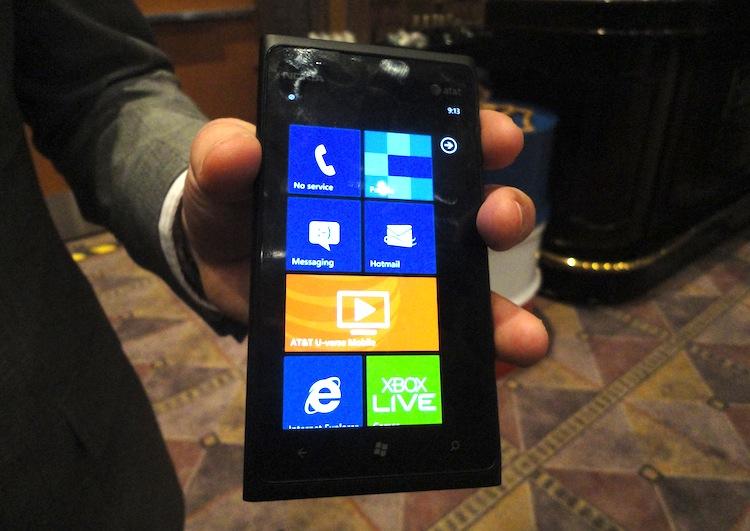
The worst part about picking out and buying a new phone is buying the new phone. Nobody likes to swipe their card for a few hundred dollars for a new smartphone, no matter how awesome or groundbreaking it is. In most cases, the money spent on a new phone could be put towards other things – a steep monthly car payment or that past due credit card balance.
Over the last year or so, smartphone pricing has gotten a little more inconvenient for those who don't have a lot of extra cash to throw around yet don't want to settle for a mid-range phone. In 2010 and even this time last year, $200 plus a little tax and a two-year agreement would land you with one of the top devices around. With bigger, faster, more capable phones now available, however, the whole pricing scale of smartphones has completely changed. A mid-range phone will now set you back anywhere from $150 to $200 with a two year agreement. The best of the best, which likely has some form of 4G in tow, will cost you between $250 and $300 with an agreement.
This has become the standard in mobile phone pricing and has largely been put into place by Android phone manufacturers and the respective wireless providers. And when a new high-end phone is announced or leaked without a price, it's easy for us to assume that it will sell for somewhere north of $200, maybe up to $300. We've come to expect it.
For example, the Nokia Lumia 900 was announced for release on AT&T's LTE network "in the coming months." During the announcement, no official pricing was given. On a device like the Lumia 900 (which touts a 4.3-inch WVGA AMOLED display, 16GB built-in storage, 8-megapixel camera with wide angle Carl Zeiss optics and 1.4GHz Snapdragon processor), we would expect it to sell for at least $200. Even $250 would be fairly reasonable by today's standards.
However, a report from BGR earlier today revealed some interesting info on the launch of the Lumia 900 – if rumors are to be believed, that is. The device will supposedly sell for $99.99 with a two-year agreement come March 18th. Now, it's important to take this information for what it is, just a rumor. But for the sake of this article, let's assume BGR's source is in fact correct. What could a $99 Lumia 900 do for Windows Phone? Better yet, what could it do to Android?
When you compare the Lumia 900 to all of the preceding Windows Phones, the Lumia 900 is like the EVO 4G was for Android ... in a sense. I wouldn't expect a splash on the same scale as the EVO from the 900, but it has the ability to change the direction Windows Phone, single-handed. Of the various Windows Phones to date, the Lumia 900 stands out with differentiated hardware, higher-end specifications and those lustrous Carl Zeiss optics Nokia is notorious for.
All of this lumped together in a single device, at a normal price and with the extra promotion from AT&T would likely be plenty to help put Nokia back on the map and grow Windows Phone market share here in the States. But at a mere $99 on-contract, you're getting excellent hardware, fluid software and high-end specs – almost everything you would get out of the best Android phones – for a fraction of the price a comparable phone.
Just last week, I wrote on Huawei's ability to tackle the US market later this year by offering high-end, luxury products with topnotch specs at affordable prices. Their Ascend P1 S would be a perfect start if it launched in the US at the $400 sans contract price we were given at CES. But an even more likely possibility is Nokia doing the exact same thing with high-end Windows Phones for dirt cheap.
It's not likely that a low-ball price on the Lumia 900 would affect the sales of many high-end Android phones. But it would certainly hit Android OEMs below the belt. Android's major game so far has been offering products to every consumer: budget phones, high-end superphones and everything in between. High-end Android phones generally serve their purpose with few hitches. But once you dip below a certain price point, into the low-end spectrum, Android phones are a hit or miss. While they're better than they were, say, a year ago, there are still quite a few low-end and mid-range Android phones I wouldn't wish upon my worst enemy.
Windows Phone devices, on the other hand, all tend to perform on the same level, irrespective of price point and hardware. If Microsoft and Nokia can prove this by offering high-end devices at low-end prices (and low-end devices for even less), this could be the way in that Windows Phone has been looking for. It's not going to slingshot them ahead of the curve by any means, and it would be a slow start rather than a sprint to the top like we saw with Android. But hey, it's a start nonetheless, a competitive edge. And as you may recall, Microsoft is in this for the long haul and has the money to support slow progress.
What say you, ladies and gents? Does a $99 Lumia 900 pique your interests? Would you buy one over a comparable $100 Android phone? A $300 high-end Android phone?